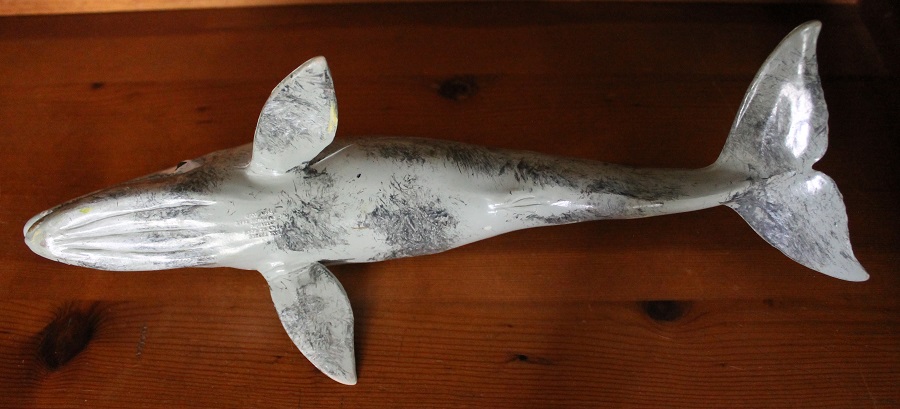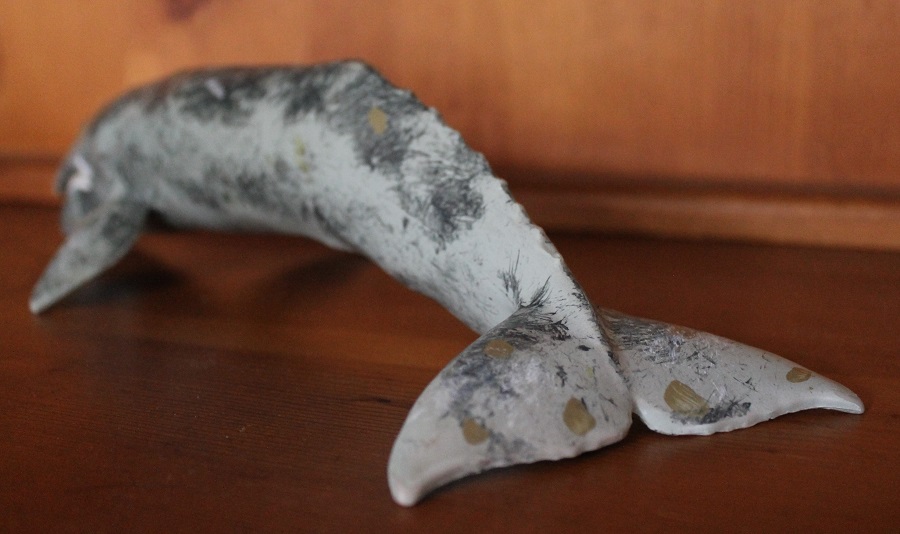The gray whale (Eschrichtius robustus) is a baleen whale that’s the sole extant member of its genus and the family Eschrichtiidae. Two populations currently live in the north Pacific, one small Asian population and a much larger population along the western coast of North America. Gray whales are near shore species and are frequently sighted along California and the Baja Peninsula. Gray whales of the same species once lived in the North Atlantic but are now extinct, killed off by whalers centuries ago. Because it’s such a popular species along the California coast it makes sense that Safari Ltd. would include the species in their Monterey Bay Aquarium collection early on in the collection’s formation.

Much like how their partnership with the Carnegie Museum resulted in the Carnegie Collection of prehistoric animals, Safari also has a partnership with the Monterey Bay Aquarium. The MBA focuses much of their attention on local habitats and species. They’re famous for being the only aquarium to successfully keep great white sharks for a prolonged period of time. The Monterey Bay Aquarium opened in 1984 and the partnership with Safari began in 1990 and is ongoing, this gray whale was originally produced in 1991.

Gray whales measure 40-50’ (12-15 meters) with females being slightly larger than males. The Safari gray whale measures 13.5” (34cm) which puts it at 1:40 scale, the entire MBA line is produced in this scale. This figure is still in production and easily obtained. A calf was produced as well but appears to be out of production and harder to find.

Despite its age this is an excellent model that holds up well. The open mouth displays the gray whale’s distinctive, short baleen plates. Gray whales have a unique feeding behavior where they swim sideways along the sea bottom, scooping up sediment and feeding on crustaceans. This feeding behavior explains why gray whales have a preference for near-shore habitats.

Two blowholes are present in a V-shape atop the head which in living grays produces a heart shaped spout useful in identification. Three deep grooves are sculpted under the jaw which in life can number 2-4; this feature is quite different from the many, prominent grooves seen in rorquals. The gray whale lacks a dorsal fin and instead has a ridge of dorsal crenulations or “knuckles” running down the rear portion of the back down to the tail.

The sculpt is painted in a slate gray color with darker gray blotches and brush strokes that closely resemble the mottled, often scarred skin of actual gray whales. Brown, encrusted barnacles are sculpted and painted around the head, flippers, and down the back. If there are any complaints to be made about this piece it’s the visible seam that runs down the sides of the model, but that’s a minor complaint for a toy that’s been running strong for the last 28 years.

Disclaimer: links to Ebay and Amazon on the AnimalToyBlog are affiliate links, so we make a small commission if you use them. Thanks for supporting us!




pretty good figure, but i don’t have enough money for it :/